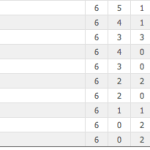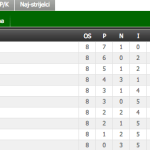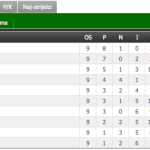The Croatia First Football League is seeing more spectators at their matches, while players are welcoming higher wages.
In the last few days, Uefa completed yet another analysis of European club football. This time, through a 125-page presentation, an abundance of interesting information can be found – including data that shows Croatian football clubs are on an upward trajectory, reports Goal.hr on January 17, 2018.
Visits to the first league football matches in the 2016/17 season fell to as much as 62% in the European leagues (compared to the 2015/16 season), but in Croatia, the number has grown! Croatian football has recorded growth from 5 to 15% in this area, classifying the Croatian First League in the same group with the Portuguese, Austrian, Montenegrin, Bulgarian, Turkish, Kazakhstan and Northern Leagues.
Interestingly, there are 11 clubs in the 2016/17 season who saw over one million viewers at their matches, and for the first time in this group, the data found West Ham, Celtic, and Liverpool. West Ham’s stadium change brought much greater visibility to the English club, hence much more in earnings as well. It turns out that West Ham leaving Boleyn Ground was a more significant plus for their finances than for the club’s standings in the Premier League.
Barcelona was the most watched European team in the 2016/17 season (1,482,646 spectators), followed by Manchester United, Borussia Dortmund, Real Madrid, Bayern, Arsenal, West Ham, Celtic, Schalke, Manchester City and Liverpool, who had 1,007,304 spectators at their matches. The most-watched matches are still in England and Germany, where five leagues are among the ten most visited in the past season.
England’s Premier League dominates European football, followed by the German Bundesliga, and the English Championship in third. Only then does Spain, Italy, France, and the second German league follow. To make up the rest of the top ten is the Dutch league, the third division English league, and the Portuguese league.
The Croatian First Football League counts ten clubs, just as the Albanian, Austrian, Estonian, Faroe Islands, Georgian, Gibraltar, Macedonian, Montenegrin, Swiss and Slovenian leagues. Most European clubs in first league football, including England, Spain, France and Italy, count 20 clubs, while Armenia counts the least with only six.
Croatian club football also recorded a severe increase in club coefficients in European competitions. Croatian clubs have shown positive results over the past ten years, climbing up to 16th place from 27th. The highest growth in this area was recorded by Belarus (who jumped 21 places), and Azerbaijan and Kazakhstan whose clubs jumped 16 places. The most significant drop in the same period was recorded by Lithuanian clubs (by 15 spots) followed by Scotland, Romania, Bulgaria, and Latvia.
English clubs are one of the smallest items in the annual budget regarding Uefa revenues (only 6%), while Ukraine (52%) and Croatia (51%) prevail. Croatian football has also recorded a growth of two percent when it comes to player salaries. Croatian clubs spent 4.3 million euro on average on player wages last season – that is 430,000 euro per club! As expected, this annual budget is dominated by Dinamo.
Translated from Goal.hr










